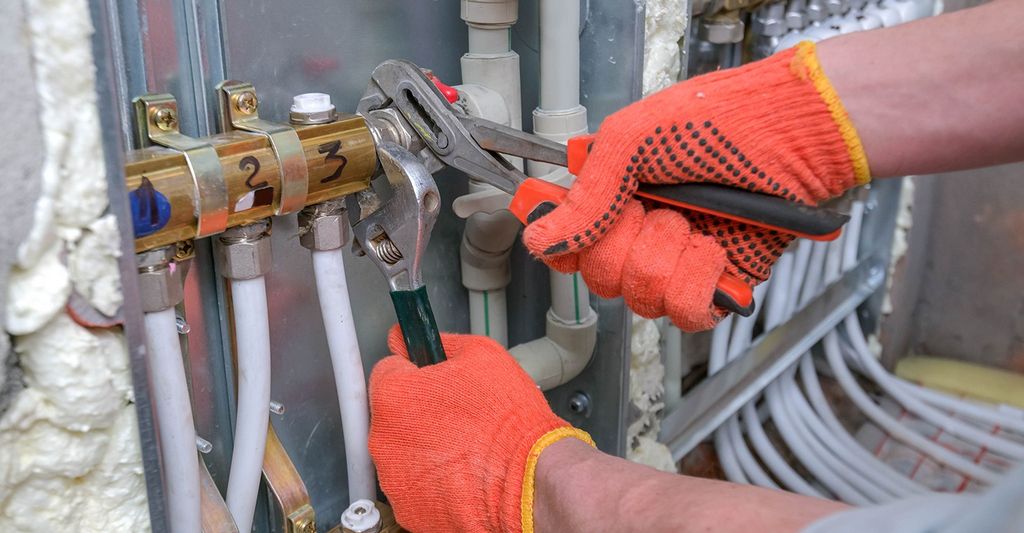How do I choose the best company to fix my HVAC system?
When your HVAC system isn’t working properly, you’ll need to hire a reputable company to repair it. Here are some of the qualifications to look for:
Licensure: Look for companies that employ technicians with the required licensing and certifications for your area. For example, find out if the technicians have HVAC licenses and NATE or EPA 608 certifications.
Insurance and warranties: Find out if the company backs its repair work on HVAC systems with a warranty for workmanship and parts. You should also hire a company that is bonded and insured.
Cost estimates: Obtaining several estimates helps ensure you’re not overpaying for HVAC services. Review the companies’ labor, materials and service call fees so you’re not surprised by any costs.
Reviews: Reach online reviews for each company you’re considering. Keep a lookout for similar complaints, especially if there’s a concern about the HVAC technicians’ quality of work.
Questions: Ask the company many questions before hiring them. For example, make sure they’re familiar with your HVAC system (split systems, heat pumps, ductless mini-splits, etc.) and ask them how long the project will take.
For more tips, visit Thumbtack’s Smart Hiring page.
How much do HVAC repairs typically cost?
HVAC repairs are usually fairly simple, such as cleaning filters or clearing a clogged water line. Costs can range from a few hundred dollars to over $1,000*, according to Thumbtack data.
Here are a few examples of common HVAC problems and the national average cost to fix them, according to Thumbtack data*:
AC unit not turning off or on: $175 to $830
Only warm air is blowing from the vents: $230 to $1,090
AC unit is frozen: $270 to $1,270
No heat: $182 to $875
Pilot light is out: $170 to $815
System keeps cycling: $180 to $868
HVAC repair companies charge for their time, parts and supplies required. If you need a complex repair like replacing your furnace or air conditioner, the job will cost much more.
HVAC systems also consist of many different parts or elements, including indoor and outdoor units, ducting, furnaces, air exchangers and filters. The cost of repairs will depend on which parts are affected.
If you're not sure what your HVAC system needs, it's always best to contact a pro and ask them to diagnose your system and provide an estimate.
*Data on file at Thumbtack. For a personalized cost estimate, request a quote from a professional.
What types of problems can an HVAC repair company address and fix?
HVAC stands for heating, ventilation and air conditioning — repair companies usually work on all of those systems. That means they should be able to fix problems with your home's heating and air conditioning systems, as well as ducting, thermostats and other parts of the HVAC system.
The most common problem with HVAC systems is dirty filters. While many homeowners change filters themselves, some prefer to leave it to the professionals. At the other end of the spectrum, some HVAC repairs are significantly more difficult or complex, such as replacing a furnace — or a coil or compressor in your air conditioner.
If you have any problems with your home's heating and cooling appliances, contact an HVAC repair company near you.
What are the signs my HVAC needs repairs? And how can I tell if it's an emergency repair?
An HVAC unit most likely needs to be repaired if it:
No longer turns on when you adjust the thermostat
Struggles to heat or cool your home
Fails to turn off when your home reaches the desired temperature.
Makes clunking sounds and creates odd smells
A repair is typically an emergency if the system fails during extreme outdoor temperatures, which can be dangerous to your health and cause problems in your home, such as burst water pipes. Natural gas, carbon monoxide and refrigerant leaks should also be treated as emergencies.
What does HVAC repair entail? What can I expect?
The HVAC repair process typically starts with diagnostics. After you explain the problem to the technician, they may try to recreate the issue by turning on the thermostat and noting the system’s response, or they may look for simple fixes like a flipped breaker switch or a dirty air filter.
HVAC technicians also use special tools like combustible gas detectors, infrared thermometers, hygrometers and pressure gauges to pinpoint the problem.
Once the technician knows what’s wrong, it’s simply a matter of fixing it. Usually, this means replacing a broken part. Most HVAC companies keep their trucks stocked with common replacement parts, but they may need to drive to a specialty store or order parts online when working with an unusual brand or making a rare type of repair.
How long does it take to repair or service an HVAC system?
HVAC service and repair calls can take anywhere from 30 minutes to 3 or more hours, depending on the size and complexity of the system and the type of repair needed.
A basic HVAC inspection and tune-up shouldn’t take more than an hour for a single-family home. On the other hand, issues like a Freon leak, motor failure or corroded vent pipe could take several hours to fix.
The technician’s experience in diagnosing and repairing problems can also affect how long it takes to finish the job. Some companies may charge an hourly rate, so a time estimate can help you avoid major surprises when you get the bill.
Remember: The timeline for your project will vary depending on many factors. Always ask your pro to provide an estimate.
